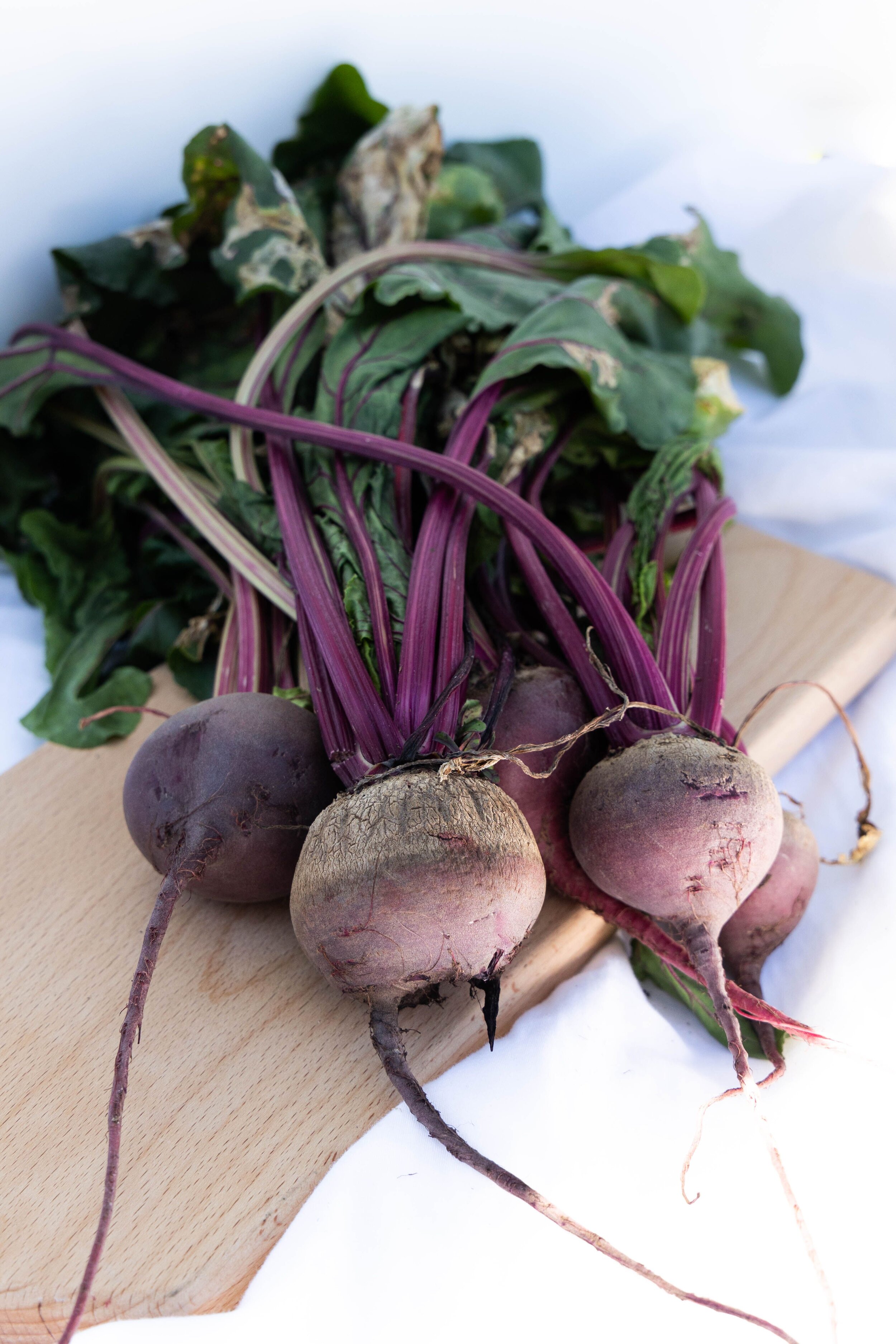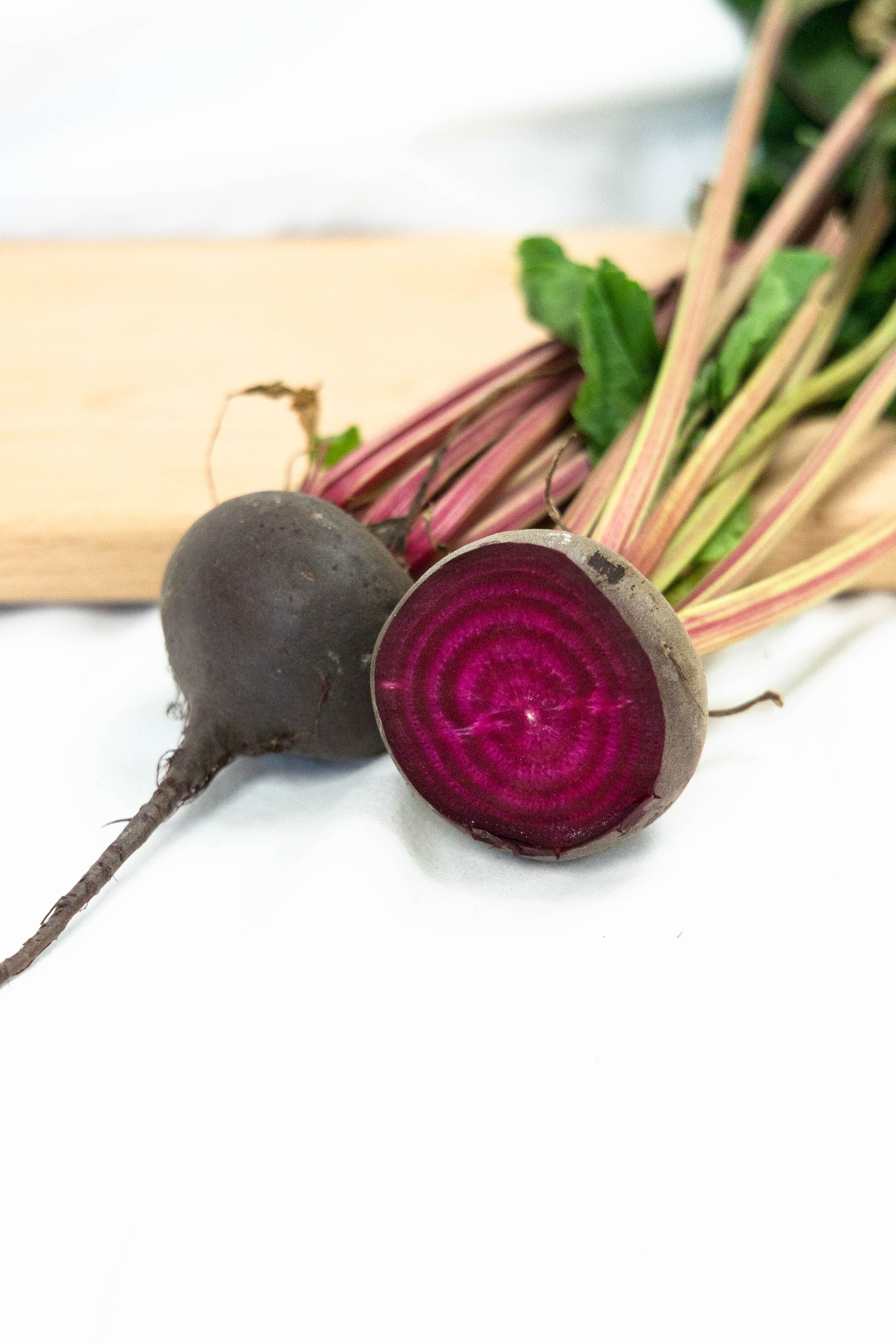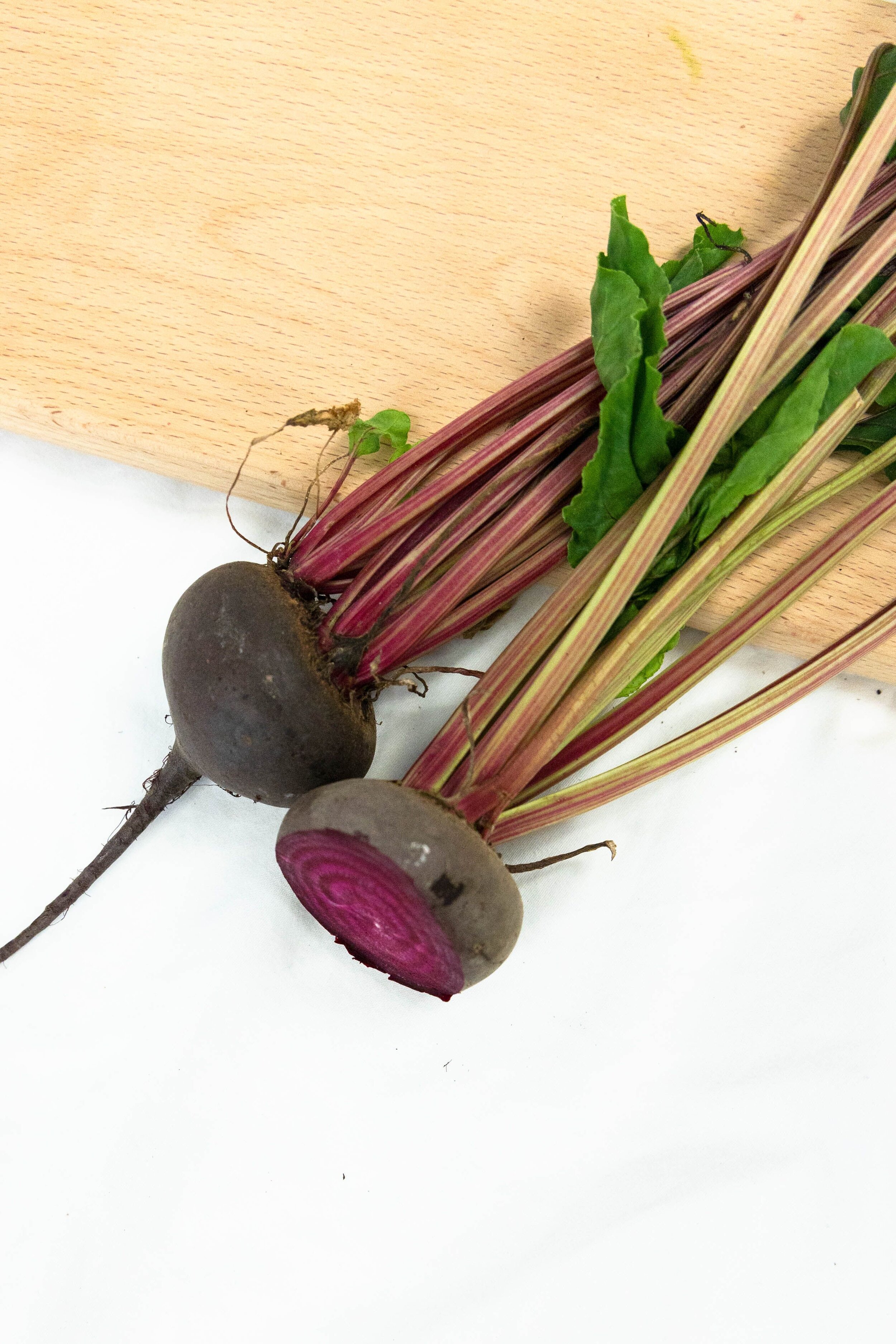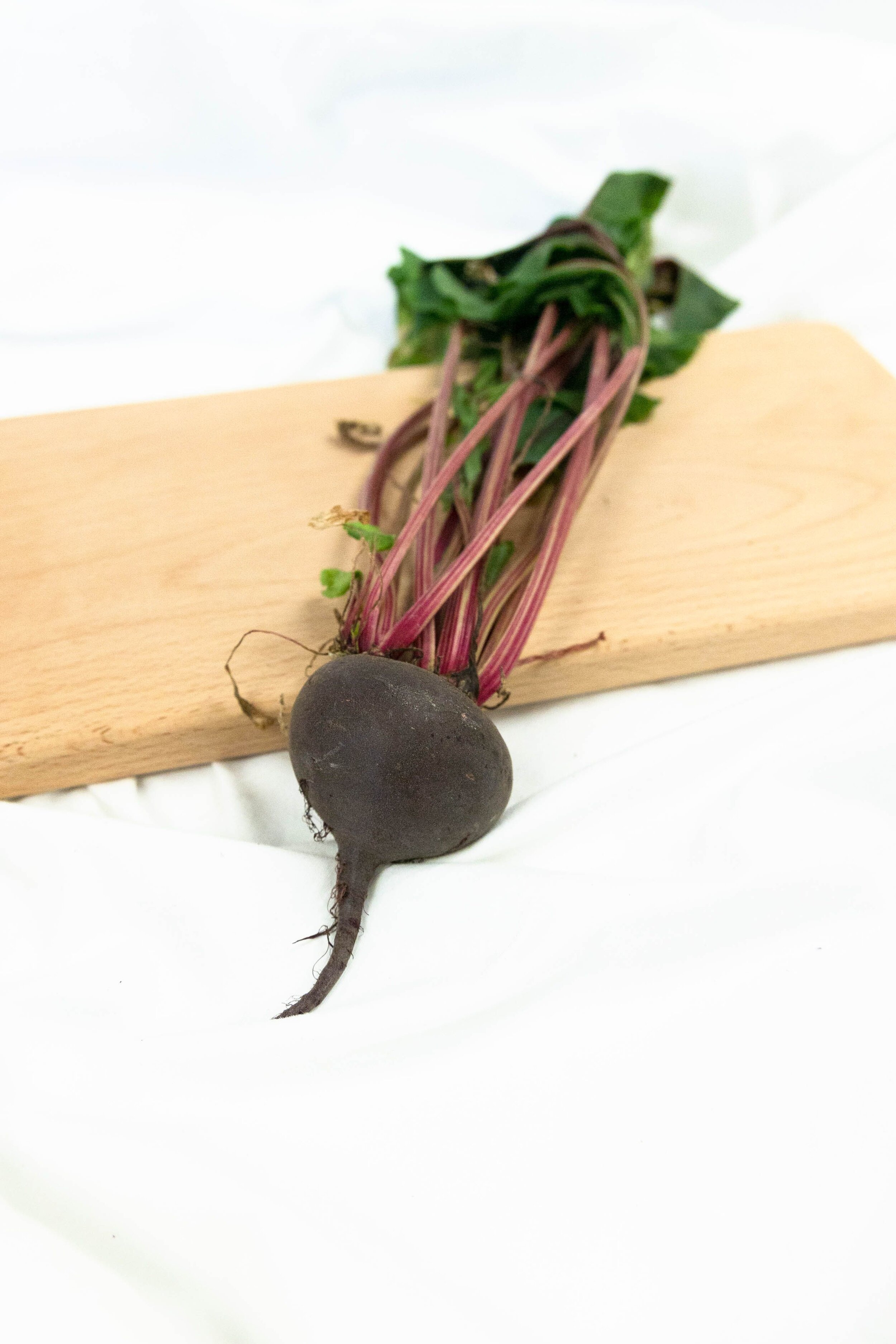 Image 1 of 6
Image 1 of 6

 Image 2 of 6
Image 2 of 6

 Image 3 of 6
Image 3 of 6

 Image 4 of 6
Image 4 of 6

 Image 5 of 6
Image 5 of 6

 Image 6 of 6
Image 6 of 6







Beet Detroit Dark Red
Beta vulgaris
Heirloom 3” round beets with a strong dark red color with a sweet deep beet flavor. The leaves are also edible and can be harvested when young. Beets can be grown in the spring or fall and tolerate light frosts. Beets are a cool season crop best grown in loose, loamy, well draining soils. Harvested for both the sweet roots and the edible tops, beets can be grown year round in most climates with flavor improving in colder temperatures. Direct sowing outdoors is preferred, as transplanting risks damaging the taproot. Most uniform, fully formed roots are grown within nicely cultivated soils free of debris, rocks and hard clay. Keep watering even and consistent to prevent scab. Direct sow in succession every 2-3 weeks for a continual harvest of roots and greens.
Plant Height: 8-10”
Light Requirements: full sun
Soil Preference: rich, loose, well draining soil
How to Grow
Germination: 10-14 days at 45-65F soil temperature
Seeding Depth: ½ - ¾”
Seed Spacing: 4”
Plant Spacing: 3-4” (within rows), 12” (between rows)
Days to Maturity: 30 days (greens), 60 days (beets)
Early-Season Seeding: Sow seeds after 2-4 weeks before the last frost date in spring.
Late-Season Seeding: Sow seeds at least 10 weeks before the first frost in fall.
Growing Tips: Beets do better when grown in cool weather and have a shallow root system requiring consistent irrigation during warm days. Excessive nitrogen will cause leaf growth and limited root development. Harvest beets before the first hard frost in fall. Succession plantings every 2 weeks will supply a consistent crop.
Harvest: Greens - 30 days after seeding. Beets - Harvest when beets are emerging above the soil surface at about 60 days after seeding.
Beta vulgaris
Heirloom 3” round beets with a strong dark red color with a sweet deep beet flavor. The leaves are also edible and can be harvested when young. Beets can be grown in the spring or fall and tolerate light frosts. Beets are a cool season crop best grown in loose, loamy, well draining soils. Harvested for both the sweet roots and the edible tops, beets can be grown year round in most climates with flavor improving in colder temperatures. Direct sowing outdoors is preferred, as transplanting risks damaging the taproot. Most uniform, fully formed roots are grown within nicely cultivated soils free of debris, rocks and hard clay. Keep watering even and consistent to prevent scab. Direct sow in succession every 2-3 weeks for a continual harvest of roots and greens.
Plant Height: 8-10”
Light Requirements: full sun
Soil Preference: rich, loose, well draining soil
How to Grow
Germination: 10-14 days at 45-65F soil temperature
Seeding Depth: ½ - ¾”
Seed Spacing: 4”
Plant Spacing: 3-4” (within rows), 12” (between rows)
Days to Maturity: 30 days (greens), 60 days (beets)
Early-Season Seeding: Sow seeds after 2-4 weeks before the last frost date in spring.
Late-Season Seeding: Sow seeds at least 10 weeks before the first frost in fall.
Growing Tips: Beets do better when grown in cool weather and have a shallow root system requiring consistent irrigation during warm days. Excessive nitrogen will cause leaf growth and limited root development. Harvest beets before the first hard frost in fall. Succession plantings every 2 weeks will supply a consistent crop.
Harvest: Greens - 30 days after seeding. Beets - Harvest when beets are emerging above the soil surface at about 60 days after seeding.
Beta vulgaris
Heirloom 3” round beets with a strong dark red color with a sweet deep beet flavor. The leaves are also edible and can be harvested when young. Beets can be grown in the spring or fall and tolerate light frosts. Beets are a cool season crop best grown in loose, loamy, well draining soils. Harvested for both the sweet roots and the edible tops, beets can be grown year round in most climates with flavor improving in colder temperatures. Direct sowing outdoors is preferred, as transplanting risks damaging the taproot. Most uniform, fully formed roots are grown within nicely cultivated soils free of debris, rocks and hard clay. Keep watering even and consistent to prevent scab. Direct sow in succession every 2-3 weeks for a continual harvest of roots and greens.
Plant Height: 8-10”
Light Requirements: full sun
Soil Preference: rich, loose, well draining soil
How to Grow
Germination: 10-14 days at 45-65F soil temperature
Seeding Depth: ½ - ¾”
Seed Spacing: 4”
Plant Spacing: 3-4” (within rows), 12” (between rows)
Days to Maturity: 30 days (greens), 60 days (beets)
Early-Season Seeding: Sow seeds after 2-4 weeks before the last frost date in spring.
Late-Season Seeding: Sow seeds at least 10 weeks before the first frost in fall.
Growing Tips: Beets do better when grown in cool weather and have a shallow root system requiring consistent irrigation during warm days. Excessive nitrogen will cause leaf growth and limited root development. Harvest beets before the first hard frost in fall. Succession plantings every 2 weeks will supply a consistent crop.
Harvest: Greens - 30 days after seeding. Beets - Harvest when beets are emerging above the soil surface at about 60 days after seeding.